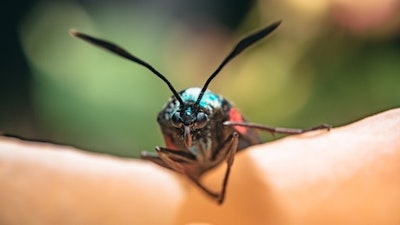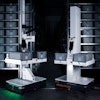
Though meant for storing goods, warehouses make an ideal shelter for pests by providing the only three things they need to survive -- food, water and shelter. Once inside your warehouse, pests are not only resilient, but also hard to eliminate. From contaminated shipments to damaged packaging, pests can cause extensive damage that can result in expensive consequences. And, with shipments constantly moving in and out of the facility, the risk of letting in an unwanted intruder runs high.
Proactive measures are critical to help keep pests from threatening your warehouse, supply chain and profits. The best means of management is an informed warehouse pest control plan that starts with a strong partnership with a pest management professional.
Pest management professionals should share warehouse pest management best practices by identifying pest threats, addressing critical hot spots and involving your employees.
Recognize pests and their calling cards
Before developing a pest management plan and engaging your employees, you need to know what kind of pests are likely to make their way into your warehouse. The first step in proactive pest management is identifying their key features and recognizing telltale signs of their presence. In warehouses, common pests include rodents, cockroaches, flies and food stored-product pests. While there are many different kinds of each, these pests do have certain defining features:
· Rodents range in length from 7-14 inches. But, don’t let their size fool you – they can squeeze into holes as small as a quarter. From grease stains on walls and shipments to gnawed boxes and electrical wires, rodents know how to leave their mark. They can contaminate products and surfaces through their waste products and saliva, known to directly or indirectly transmit 35 diseases, including Hantavirus, salmonellosis and typhus.
· Cockroaches have flat, oval-shaped bodies that are typically brown in color with grey or red undertones, depending on the species. These six-legged pests are known to run quickly from place to place, hiding out of sight by squeezing into crevices the width of a penny. With their affinity for cardboard, shipping glue and moisture, cockroaches can wreak havoc on a warehouse.
· Flies are one of the most common pests. Most flies are smaller than 1/4 of an inch with a single set of wings, six legs and mouthparts ideal for sponging up food. Flies, who are strong daytime fliers that can easily find entry points, do more than just cause a buzzing annoyance, posing a real health threat. Each time flies land on a surface, they leave behind bacteria-laden materials that can transmit dangerous diseases such as E.coli, Salmonella typhi, Shigella and Staphylococcus. Flies can also signify a larger sanitation issue that needs to be addressed.
· Food storage pests are a problem for warehouses dealing with food products and vary in appearance. Rice weevils and red flour beetles, for example, are small brown insects known to find their way into grain-based products. Indian meal moths and almond moths have wings, giving them more mobility throughout your warehouse. Regardless of which species, these pests contaminate the food products they make their shelter, causing damage to your reputation and bottom line.
Address critical hot spots
Hot spots are areas that attract pests, inviting them into your warehouse with the promise of food, water and shelter. Each of these spots beckon pests most notably by providing a form of entry, putting your profit on the line. Addressing each of these hot spots will help fortify your warehouse against pests:
· Seal entry points. Eliminating possible entry points is a must when it comes to pest management. Pay close attention to doorways and windows, keeping them closed as much as possible. Entry points are not limited to those designed for humans – notice and seal gaps, cracks and crevices that provide pests just enough room to enter your facility.
· Monitor the warehouse exterior. Pay careful attention to the perimeter of the building. Exterior bait stations can help reduce rodent pressure and lessen the likelihood of rodents getting inside, which is their primary goal. Don’t forget to trim exterior landscaping that can not only attract and conceal pests but provide them a ladder into your facility.
· Inspect incoming shipments. Inspect every skid, every time. Even if your warehouse protocols are on par, there’s no guarantee that the same can be said of your suppliers. Canceling a pest-carrying shipment before it enters the warehouse can help prevent an infestation, so be sure your employees know when and how to cancel a shipment due to pest activity.
· Rotate product storage. Reduce the chance of your products offering harborage by regularly moving products within the warehouse, which helps reduce the possibility of a pest problem by limiting dark, undisturbed spaces that are otherwise ideal pest shelters. Maintain an “inspection aisle” of at least 18 inches between stacks of product and the walls to inspect behind and between stacks. Spacing products out helps provide cushion, allowing you to act if you find out that one area of your warehouse is compromised.
Involve your employees
As your eyes and ears on the ground, your employees’ positions make them your warehouse’s first line of pest control defense. Keeping a pest sightings log, where your employees can record any problems they identify, is the best way to know pest activity doesn’t go ignored. Having a process in place on how to report and record pest activity can also help you avoid further issues.
Documenting an issue is just the first step. Be sure you assign one or more employees with the task of reviewing the log frequently for new entries. A pest sightings log is only as useful as much as it is checked. By reviewing the log for new entries, you help make the most of your employee’s insight and can call upon your provider at the first signs of pest activity. While working with your pest management provider, ask if they offer resources or training sessions to help inform your employees about their imperative role in rodent prevention.
Be sure to reach out to a pest management professional with warehouse experience when developing your proactive pest management plan. They can work with you to help address your warehouse’s specific needs, educating you and your employees on the best methods to help prevent further issues. Together, you can develop an integrated pest management plan to help you get ahead of any pest problem. And, with that customized plan in place, you can rest assured your warehouse is protected against pests.



















